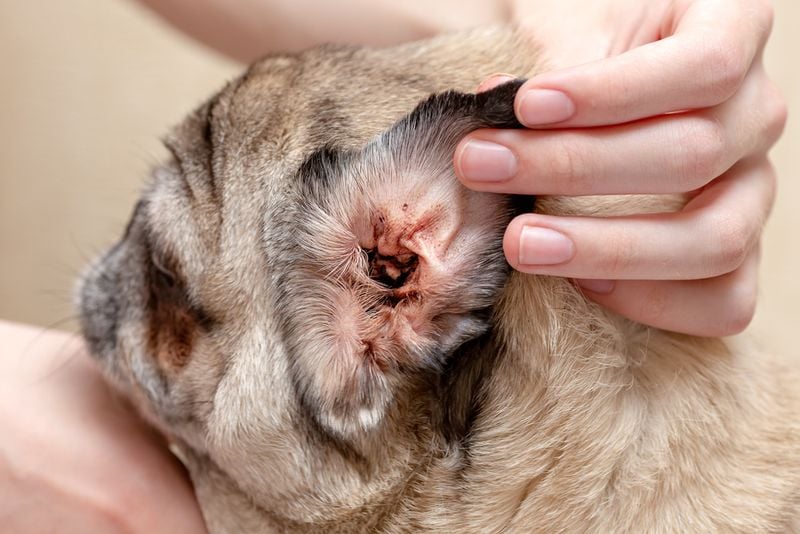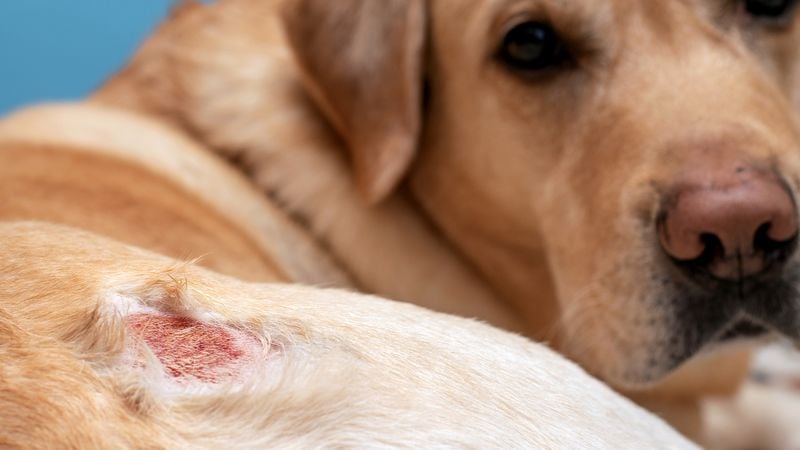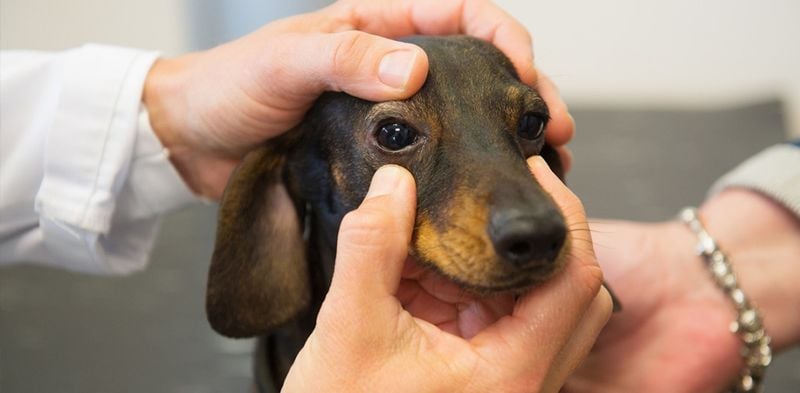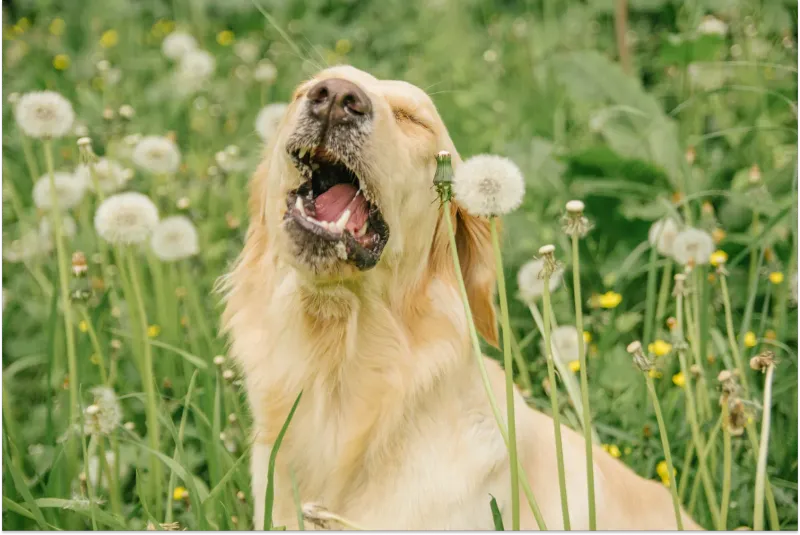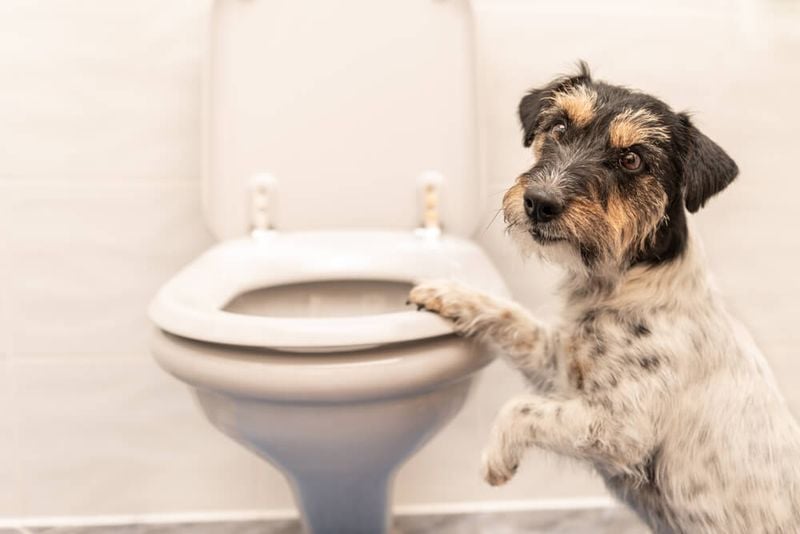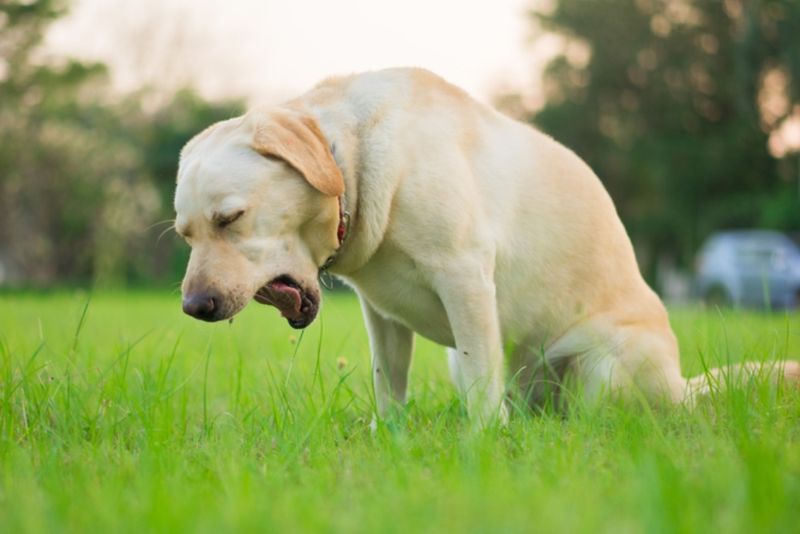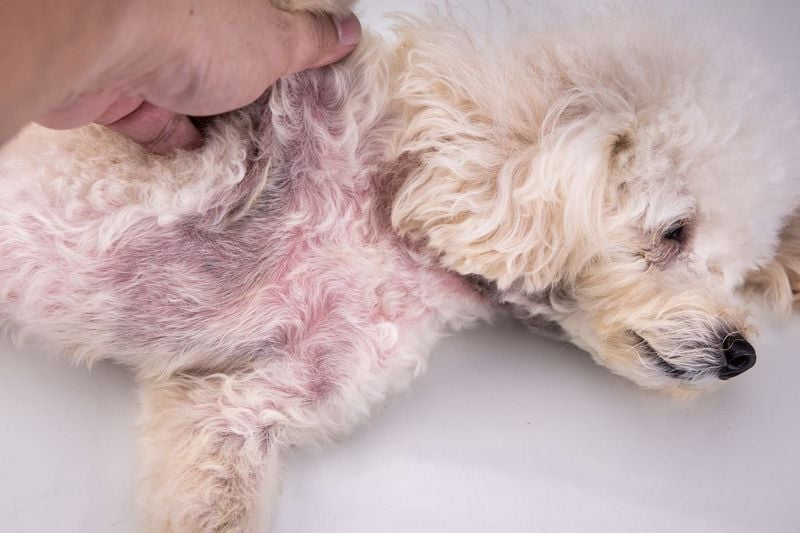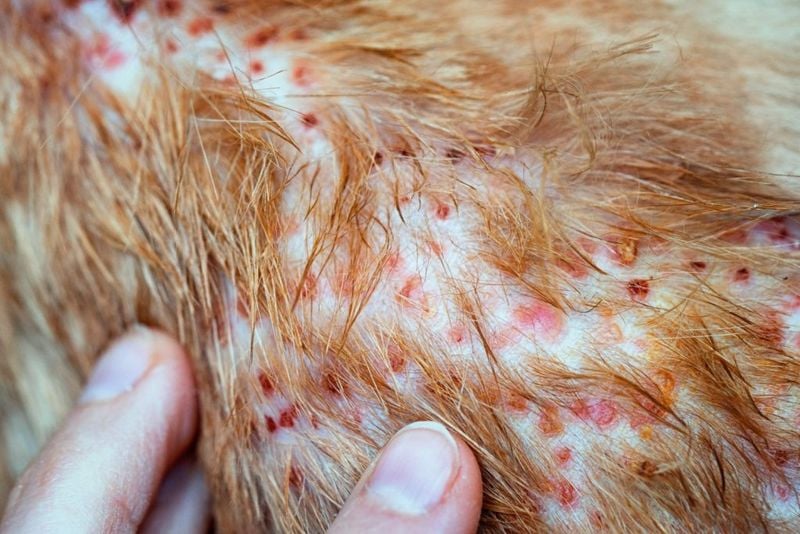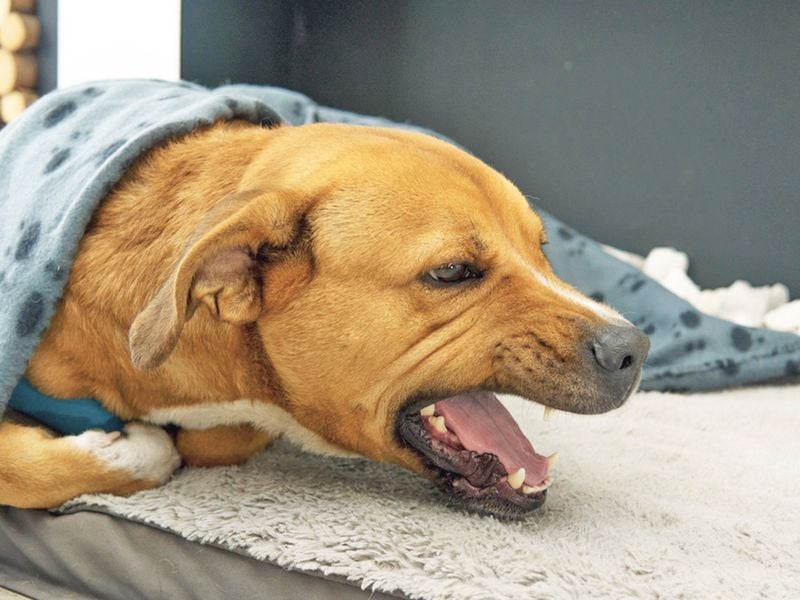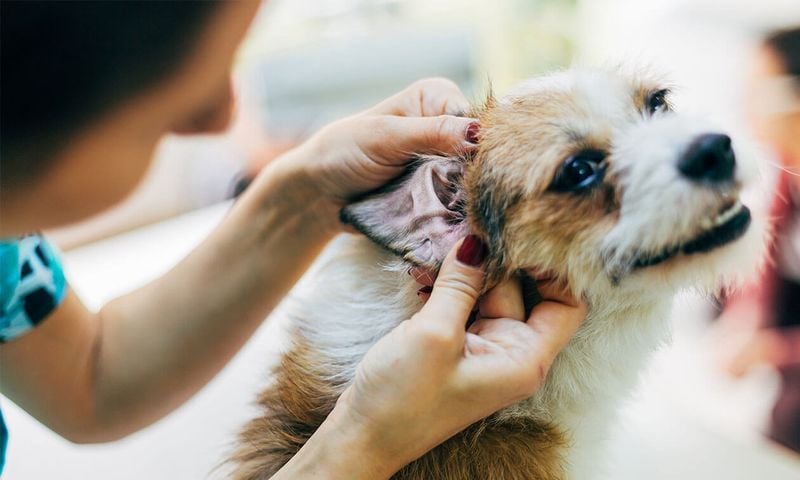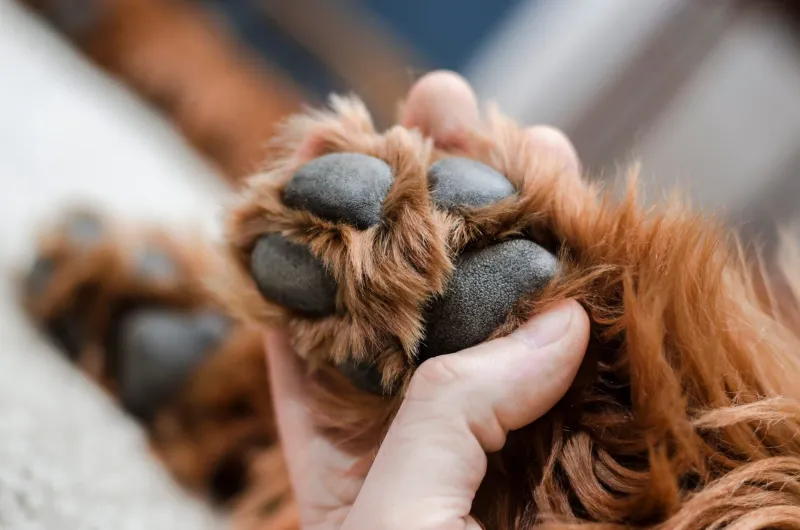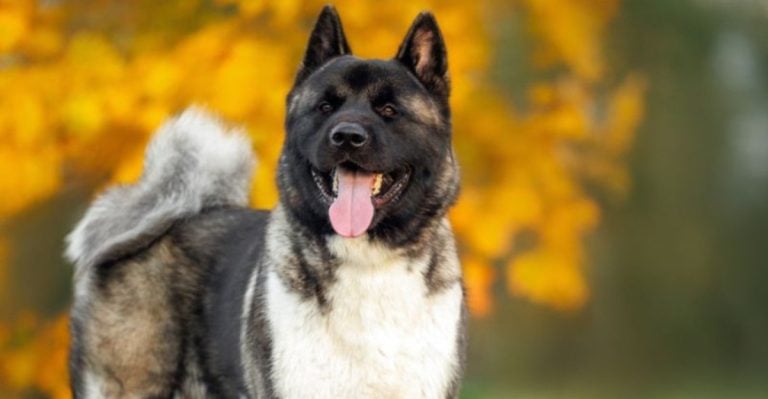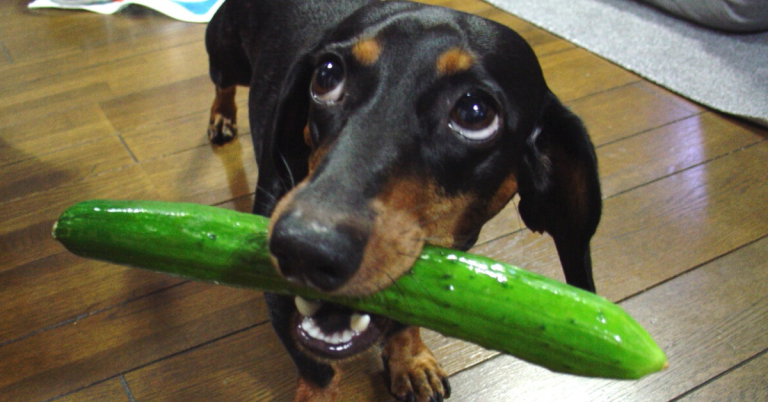20 Dog Health Issues That Might Actually Be Allergies in Disguise
If your dog has been scratching more than usual, licking their paws nonstop, or battling recurring ear infections, allergies might be to blame.
Just like humans, dogs can have allergic reactions to everything from food and pollen to cleaning products and flea bites. But here’s the tricky part: allergies in dogs don’t always show up as obvious sneezing or hives.
Sometimes, they hide behind other health problems — subtle signs that can easily be mistaken for something else entirely.
This article breaks down 20 health issues that might actually be connected to allergies, even if they don’t seem like it at first glance.
Knowing what to look for could help you spot an underlying allergy sooner, get your pup some much-needed relief, and avoid unnecessary vet bills in the process.
1. Chronic Ear Infections
Floppy-eared breeds may charm us with their adorable looks, but they can also be prone to persistent ear troubles. Frequent infections might hint at underlying allergies, either from food or their environment.
Regular bouts of ear ache are no fun, and they may be caused by an overgrowth of yeast or bacteria.
If your dog’s head is often tilted to one side, or if it’s constantly scratching at its ears, it might be time for a vet visit. Regular cleaning and monitoring can make a huge difference, and diet adjustments could offer relief.
Some dogs may even develop a head-shaking habit, a tell-tale sign of discomfort. Consider the role allergens play in these chronic issues.
2. Itchy Skin (Pruritus)
Itchy skin, or pruritus, is a universal sign of discomfort in dogs, often arising from unseen allergens.
Whether it’s those tiny dust mites or the pollen floating in spring air, allergies don’t discriminate. A dog incessantly scratching or biting at its skin is a sight no owner wants to see.
Switching up their diet or environment might help alleviate the issue. Regular grooming and hypoallergenic products can be a big help. It’s not just about stopping the itch, but understanding its root cause.
Consult with a vet to figure out what exactly is bothering your pup. Tailoring solutions to your dog’s specific needs can bring about much-needed relief.
3. Hot Spots
Hot spots, those nasty inflamed patches of skin, are the result of your dog’s frantic scratching or licking. It’s a vicious cycle where the more they itch, the worse it gets. Allergies are often the unseen culprits behind these moist and red lesions.
The irritation can drive your furry companion to lick and bite incessantly, causing even more harm to their skin. Keeping their paws clean and using vet-recommended creams can aid in breaking the cycle.
Seeking expert advice is crucial as untreated hot spots can lead to more serious infections. Identifying triggers is key to providing lasting relief.
4. Excessive Paw Licking
When dogs spend a great deal of time licking their paws, it can be much more than a grooming habit.
Allergy-induced itching can lead them to this compulsive behavior, turning a simple act into a signal of distress. Grass, cleaning agents, or even the floor they walk on could be the culprits.
This habit can lead to raw, sore paws, risking infection. Reducing exposure to known allergens and using protective balms might help, but a vet’s insight can pinpoint the exact cause.
Addressing this issue promptly can prevent further discomfort and complications. It’s crucial not to ignore this tell-tale sign.
5. Red, Watery Eyes
Dogs with red, watery eyes might look like they’ve just watched a sad movie, but it’s often a sign of allergic conjunctivitis. This condition is particularly troublesome during high pollen seasons or when exposed to specific irritants.
The inflammation can cause noticeable discomfort, leading dogs to paw at their eyes. Over-the-counter solutions should be avoided; instead, consult a vet for suitable treatments.
Ensuring a clean living environment and regular vet check-ups can help manage the condition. By identifying and minimizing exposure to allergens, your furry friend’s eyes can remain clear and comfortable.
6. Sneezing Fits
Much like humans, dogs can experience a fit of sneezes triggered by environmental allergens. These fits may seem cute, but they’re a clear sign of irritation. Dust, mold, or pollen could all be potential triggers.
Pay attention to when these episodes occur to help identify the source. Regular cleaning and maintaining a dust-free home might just do the trick. Remember, consistent sneezing isn’t just an annoyance; it’s a call to action.
Consulting with a vet can guide you in finding the right allergy medications or lifestyle changes to help your pet breathe easy again.
7. Runny Nose
A runny nose in dogs might make you think they’ve caught a cold, but it could actually be an allergy symptom. Environmental factors or seasonal changes often lead to this watery discharge.
While it might seem like a minor issue, a persistent runny nose warrants attention. Allergy testing and adjusting environmental factors can offer relief. A vet may recommend specific treatments to tackle the underlying cause.
Remember, a dog’s nose is their guide to the world. Keeping it clear and comfortable ensures their joy and curiosity remain unhampered.
8. Chronic Diarrhea
Few things are more distressing than a pet that can’t seem to settle its stomach. Chronic diarrhea in dogs can be a frustrating problem, often linked to food allergies or intolerances.
Those loose stools may signal an issue with certain ingredients in their diet.
Switching to a hypoallergenic or limited ingredient diet might be the key to easing their discomfort. Consulting with a vet can help identify the specific triggers causing digestive distress.
Addressing these issues not only improves your dog’s quality of life but also ensures they’re absorbing the nutrients they need to stay healthy.
9. Vomiting
No one enjoys cleaning up after a vomiting pet, but for some dogs, this isn’t a rare occurrence. Chronic vomiting can be an unpleasant sign of food allergies. Certain ingredients may not agree with their stomachs, leading to nausea and discomfort.
A change in diet could be the solution, but pinpointing the exact cause requires careful observation and vet input. Allergic reactions can be tricky to diagnose, yet finding the right diet can make a world of difference.
Remember, a happy tummy often leads to a happy dog. Ongoing issues should never be ignored.
10. Gassiness and Bloating
While it may sound humorous, a flatulent dog can be a sign of dietary distress. Gassiness and bloating often point to ingredients like grains, soy, or dairy that don’t sit well with your pup’s digestive system.
These symptoms shouldn’t just be dismissed as a natural part of dog life. Modifying their diet can alleviate the discomfort and make everyone in the household breathe a little easier.
Seeking advice from a vet can help pinpoint the problematic foods and lead to a more harmonious home environment. It’s all about finding the right balance for your dog’s diet.
11. Hair Loss
Spotting patches of missing fur can be alarming for any dog owner. Hair loss, often due to allergic dermatitis, can leave dogs with bald spots and uncomfortable skin.
The incessant scratching and licking only worsen the situation, causing further damage.
Identifying the allergens, whether food or environmental, is key to halting this cycle. A nutritious diet and proper skin care can often promote regrowth and restore your dog’s coat.
Don’t ignore these signs; they’re a call to address the underlying issues. A shiny, full coat is a testament to a dog’s good health and well-being.
12. Skin Rashes
Red and inflamed skin rashes in dogs are more than just a cosmetic issue. Allergies often manifest as itchy bumps or hives, making your pet’s life uncomfortable. The irritation is real, and it can turn a playful pup into a miserable one.
Addressing these rashes involves identifying the allergens, be it food or something in their environment. Topical treatments can provide immediate relief, but long-term management is crucial.
Creating a plan with your vet ensures your dog can enjoy life without the constant itch. Happier skin makes for a happier dog.
13. Chronic Anal Gland Issues
Seeing your dog scoot across the floor might seem amusing, but frequent occurrences could point to anal gland troubles. Soft stools from food allergies can lead to impactions or infections in these glands.
Dietary changes might prevent these issues, allowing the glands to express naturally. Regular vet checks can help monitor and manage gland health.
Preventing discomfort is the goal, ensuring your dog’s rear end doesn’t become a source of ongoing problems. A balanced diet can promote smoother gland function, reducing the need for intervention.
14. Coughing or Wheezing
Dogs can experience coughing and wheezing, though it’s less common, when exposed to airborne allergens. Smoke, mold, and dust are often the culprits, causing respiratory discomfort.
These symptoms should never be dismissed. Providing a clean, allergen-free environment is essential to mitigate the respiratory strain.
Consultation with a vet can determine if allergens are affecting your dog’s lungs and identify the best course of action to ensure they can breathe easy.
15. Face Rubbing or Head Shaking
Dogs rubbing their faces or shaking their heads might seem quirky, but it’s often a sign of discomfort. Allergies causing itchy ears or facial swelling can lead dogs to this behavior.
Ignoring these signs might lead to more serious issues. Regular cleaning and vet-recommended treatments can alleviate the discomfort.
Understanding the root cause of these actions helps in offering relief and preventing future bouts of irritation. A contented dog is one that’s free from unnecessary scratching and shaking.
16. Poor Coat Quality
A dog’s coat is often a reflection of their health. When allergies cause inflammation or affect nutrient absorption, a once shiny coat can become lackluster.
Addressing dietary needs and managing allergies can help restore their coat’s natural luster. Regular grooming and omega-rich foods often work wonders.
Keeping an eye on coat condition and consulting with a vet ensures your dog remains in top form. A healthy coat is a sign of a healthy dog, radiating their inner vitality.
17. Behavioral Changes
Allergies can affect more than just a dog’s physical health. Behavioral changes like irritability or restlessness might signal chronic discomfort. Sleep disturbances are common when allergies are at play.
Understanding these shifts can point towards underlying issues. Working with a vet to manage allergies can restore peace to your pet’s life.
Ensuring comfort and well-being is crucial for your furry friend’s happiness. Addressing these behavioral cues can lead to a more harmonious bond between you and your pet.
18. Frequent Infections
Allergies can compromise a dog’s immune defenses, making them susceptible to frequent infections. Yeast or bacterial infections might become a recurring battle if allergies weaken their natural barriers.
Preventive care and addressing allergies head-on can reduce the incidence of these infections. A vet’s guidance ensures appropriate treatment and management.
Strengthening your dog’s overall health can minimize these health setbacks, keeping them playful and infection-free. A proactive approach is key to a happy, healthy life.
19. Swollen Paws
Swollen paws can turn a playful romp into a painful experience for dogs. Contact allergens like lawn chemicals or seasonal pollens often lead to paw inflammation.
Protecting those paws with booties or rinsing them after outings can prevent these painful reactions. Consulting with a vet can offer specific solutions tailored to your dog’s needs.
Ensuring that playtime remains a joy rather than a chore is essential for a happy dog. Addressing paw issues promptly keeps your pet on their paws and enjoying life.
20. Reverse Sneezing
Reverse sneezing is an unusual and somewhat alarming sound, often triggered by throat or nasal irritation from inhaled allergens. This peculiar breathing pattern is common among allergy-prone dogs.
Though it may sound severe, it’s typically harmless. Identifying allergens and minimizing exposure can reduce the frequency of episodes.
Consulting with a vet can provide peace of mind and strategies to manage these events. A calm environment helps your dog cope with these unsettling episodes.

